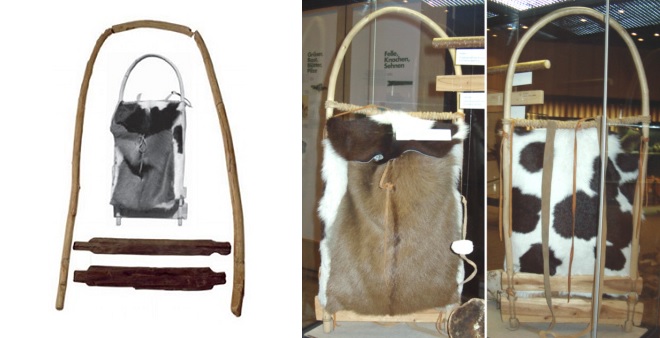External Frame Backpacks – Applying the Old Ways to the New Journeys (Part 1)
Markus Kittner, top footwear designer and all-round design enthusiast, has kindly permitted us to repost his article “External Frame Backpacks – Applying the Old Ways to the New Journeys”. Enjoy Part 1 below as we delve into this fascinating sphere of backpack history…
Learning from the past is important and I sometimes think about this from a design perspective. Can we learn from old traditional designs or techniques and apply them to modern design? Is all primitive design and technology inferior? I believe that at the very least learning about old ways can provide us with food for thought, a comparison to our new directions and if necessary can inform any necessary adjustments to our course and design thinking.
External frame backpacks are interesting not only because of their more versatile modularity, but also because the structural component of the pack is clearly visible and offers a great opportunity to any designer wanting to explore structural innovation. Designing compelling structural elements from diverse materials such as wood, aluminium, or even carbon fiber is something I think most designers live to do. Every designer and their creativity draws from all forms of knowledge and inspiration, from the core to the fringes. From a footwear design perspective the compelling design of a soft shoe upper that is interchangeable from a structural sole could one day also be inspired from an external frame backpack. A potential design improvement on function, versatility and environmental impact.
What follows is a short insight into some of the history of External Frame Backpacks. A reminder that although the external frame backpack was superseded by the internal frame almost 30 years ago, it is still a very functional piece of equipment and has an ancient history to prove it. Its long history is also a very compelling reason to explore new ways to make it relevant again in today’s outdoor market. Although it’s unknown how long humans have been carrying packs on their backs, the first external frame backpack dates at least as far back as Őtzi, a shepherd who walked the Italo-Austrian Alps 5300 years ago. When we consider products over 100 years old to be antiques, it’s incredible to think that the external frame backpack has existed for over 53 centuries.



Via www.speerschleuder.de Since Őtzi load carrying frame structures have been documented in most of the world. In the fjords and isolated Norwegian valleys they were known as ‘Hjuringsmeis’; the ones below date back to the early 1800’s.


This Norwegian external frame backpack is called ‘Sekk med Meis’ and dates back to 1880.

The Russian traditional external frame pack is called “Ponyaga” or поняги and was originally used by the Tungusic and Nivkh people from the far eastern Russian regions of Eastern Siberia and Khabarovsk Krai; the examples below are from Irkutsk.

Via The Siberian – http://по-сибирски.рф
Also from far eastern Russia is this primitive backpack design called a “Flyer” or рогулек.


Via skitalets “Flyers” or рогульки are triangular or wishbone-shaped frames.
The photos below are of Korean and Chinese coolies also known as rogulschikami рогульщиками in 1915 Vladivostok.


Via dkphoto Then there is this similar Korean frame design called a 지게.


Via Daum
In the Alps traditional load carrying frame structures were known as Kraxe and were also made from wood.

Alpine porters were known as Kraxentrager and would carry their laden Kraxen through the Alps, like their Sherpa and Balti counterparts continue to do in the Himalayas today.

Some images of Alpine Kraxentragers and Kraxen.




To the east in Polish and Slovak Tatra mountains the Nosicz profession which operates the mountain shelters is still known to carry loads of up to 200kg on similar wooden frames called nosiłek.


Via Ambra and Chem Laco Kulanga a record-holding Nosicz with a record 207.5 kg load.

Via vysoketatry and Czubaka MTB
And in France and Germany similar structures were also used around the 1800’s.

Via Wood Trekker: A Brief History of the Modern Backpack (Comments Section)
Frame structures were also used by the First Nations people to carry loads across the American continent. But very little is written about them even though they are said to have inspired the design of one of the early commercial external frame packs, the Trapper Nelson backpack.

Via Tomahawk on Bushcraft USA
Maybe they also looked similar to this woven pack from the Waimir Atroari in Brazil.

Or like this Packframe Canoe Chair.


Via hunter63
A design very similar to this Ojiwa frame from Bear Island in Eastern Canada, purchased in 1903.

Via American Museum of Natural History
–
Stay tuned for Part 2…





 Carry Awards
Carry Awards Insights
Insights Liking
Liking Projects
Projects Interviews
Interviews













